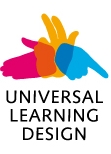Introduction
Hybrid Book is a document format which was created at Masaryk University and has been used by students of the University since 2002. It has been further developed and improved. It was originally an digital text synchronized with an audio recording and navigable through its hierarchical structure, primarily intended for visually impaired students. Over the last ten years, the Hybrid Book has developed into a mature document format enabling an undistorted access to information to students and other users with various disabilities – visual or hearing impairment, learning disorders and so on.
Development
The original text/audio data setup has been extended to the triad text/video/audio. This made it possible primarily to add a translation into sign language to an original text content (besides the mentioned audio recording). The extension by video data offers further applications. The designed data structure is moreover capable of synchronizing thus distinguished types of records and it allows to connect any type of record in any stage of document processing, not just during the creation process – the Hybrid Book viewer (available at http://www.teiresias.muni.cz/hybridbook), for example, allows to insert user commentaries directly into published documents.
Another innovation is an extended navigation in tabular data similar to that offered by a majority of screenreaders. Inclusion of further structures into synchronizing capacities of the Hybrid Book is planned – mathematical expressions, development diagrams, schemes, formulas, etc.
Principles
The descriptive structure is designed so that it allows synchronization of records of various types based on “synchronization points” only, i.e. if it is possible to describe a given record with a succession of points (e.g., timestamps in an AV recording), it is then also possible to add this record to a Hybrid Book document. It is also possible to add static records (such as images and graphs) in the form of links.
Individual records are bound in the Hybrid Book by an external description. Records as such are not altered. Thus, it is possible to add content to the document from any storage. Any type of record may be added mostly without a need of any special modification. A record or document which is being added must have the above mentioned properties: synchronization points must be applicable to the record/document. The HTML format may serve as an example. It is used in the Hybrid Book for storing text – for example, attributes such as ID or NAME may be used to mark individual synchronization points.
There are two ways to navigate in the Hybrid Book:
-
“linear” navigation, i.e. moving forward/backward by individual synchronization points;
-
“structured” navigation, i.e. by the hierarchical (tree) structure of the document.
It depends on the equipment of a particular browser which navigation steps will be at the user’s disposal; most often, navigation by adjacent synchronization points and by chapter titles is used.
Reading the Hybrid Book
It is evident at first sight that individual types of records of the document content (text, image, sound) are equal and each of them represents an information channel. It is nevertheless possible to freely switch between these records or follow them simultaneously and thus take advantage of further properties of such arrangement: to comprise the final form of information from multiple sources. It is precisely this technique that we call “hybrid reading”. It was the original aim of the Hybrid Book creators to offer this type of access to information. It is not our aim to create documents aimed directly at a particular user with all his/her needs and requirements; we are creating a virtual document described by a physical structure which enables the reader to choose his/her own access to it and the method of receiving offered information. For this goal, it is naturally necessary to provide them with a platform where they could read documents created in this way. This makes another part of our work. It is possible to find our results for example at the web site: http://www.teiresias.muni.cz/hybridbook, which offers further information about the project and the latest version of the Hybrid Book viewer with a set of sample documents.
Prospects and Outlooks
The Hybrid Book is presently run in the WWW environment and the above mentioned innovations are continuously being implemented into the system. There is an elaborate synchronization structure currently built exclusively on XML format behind the documents, designed so that it allows simple addition of new elements, primarily of types of information media according to the current needs of creators and readers. The Hybrid Book of the third generation is browser independent – it is an open format allowing anyone to create a personalized specialized viewer of this document type.









